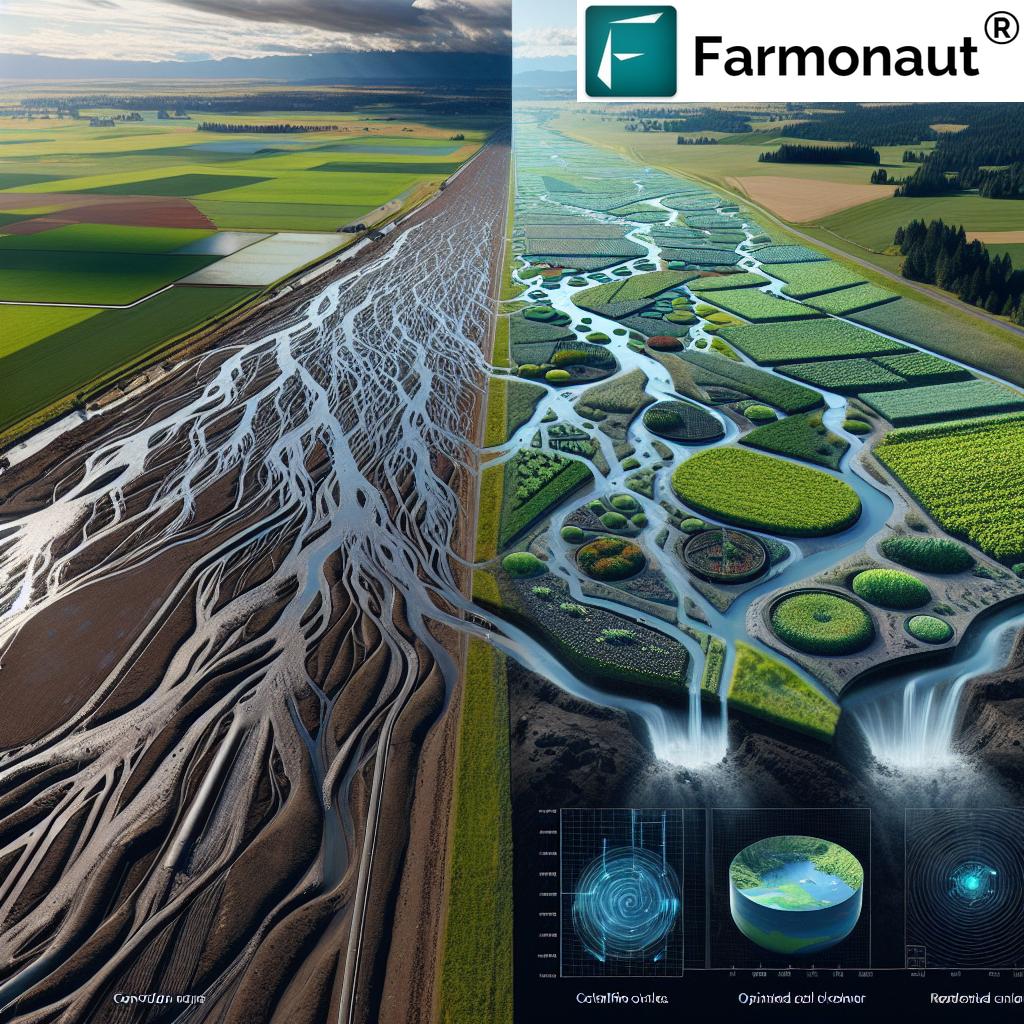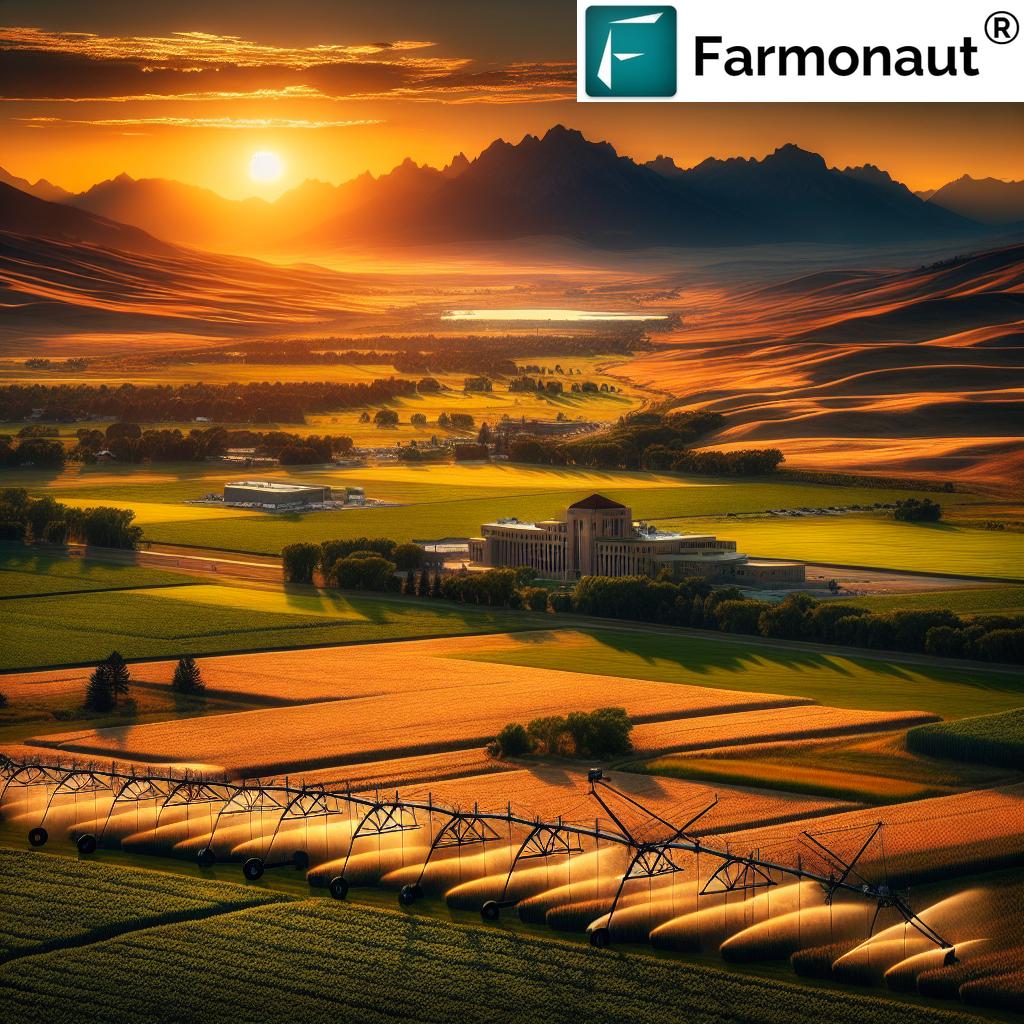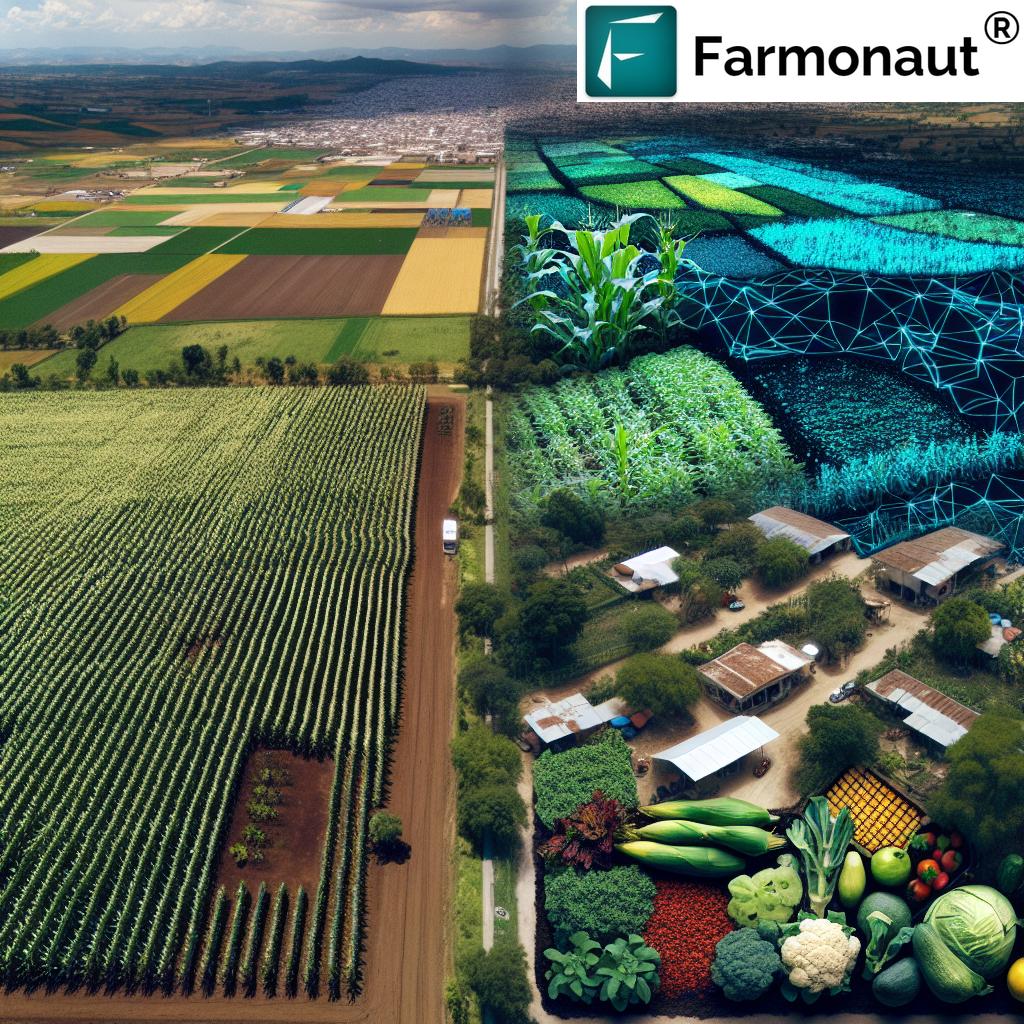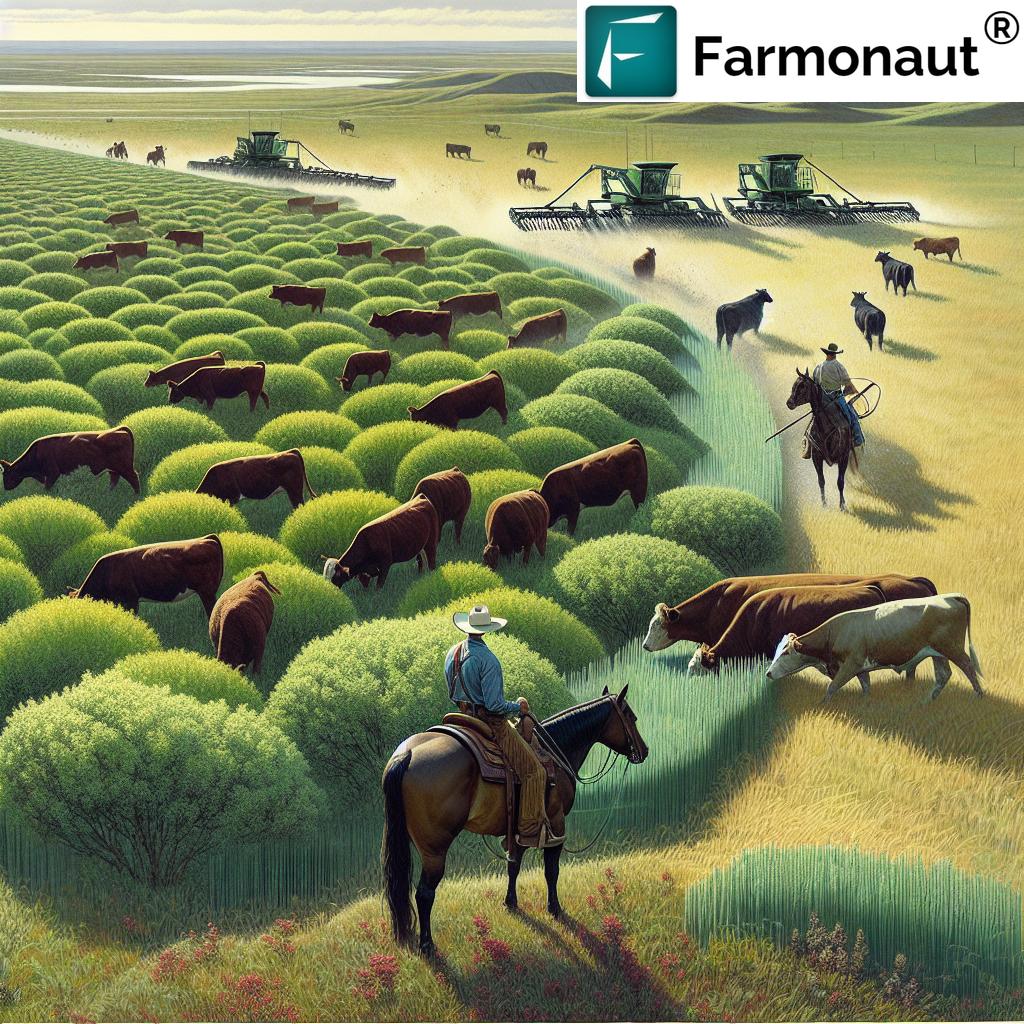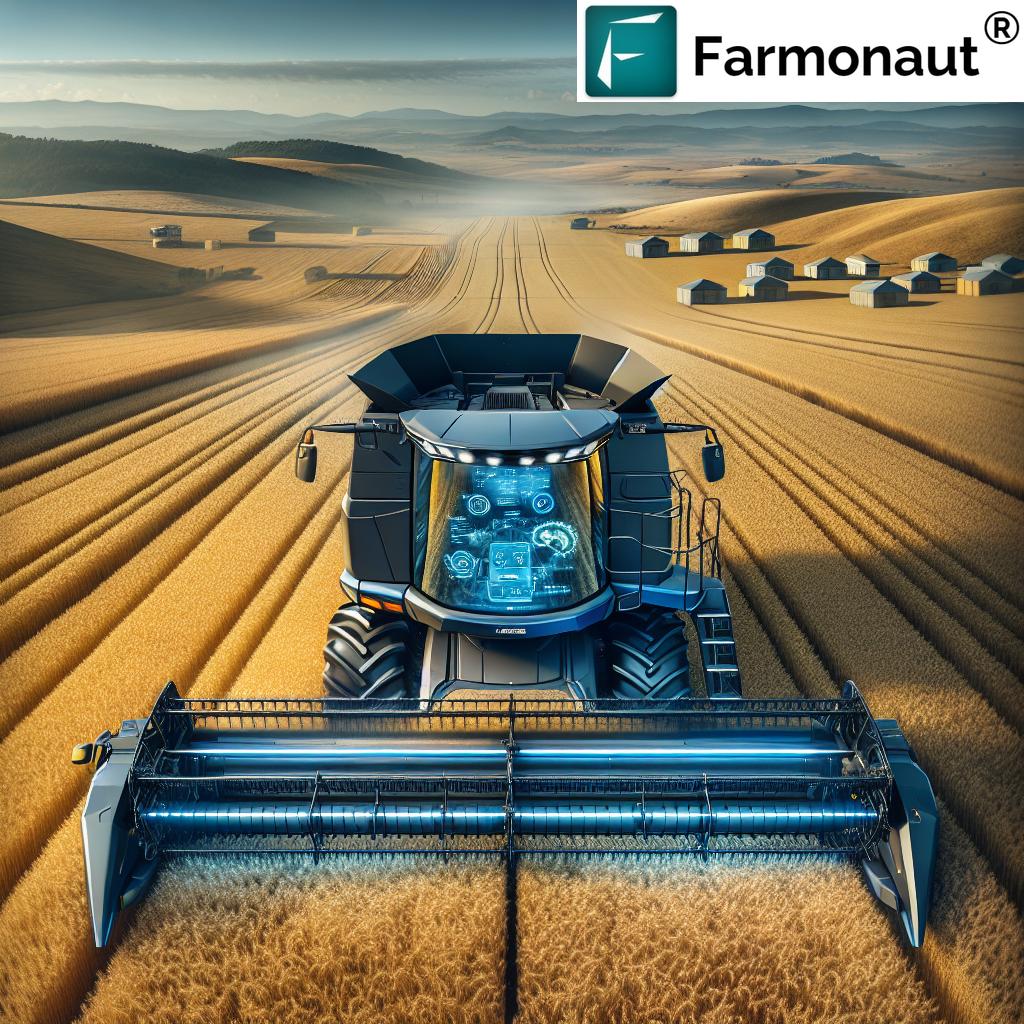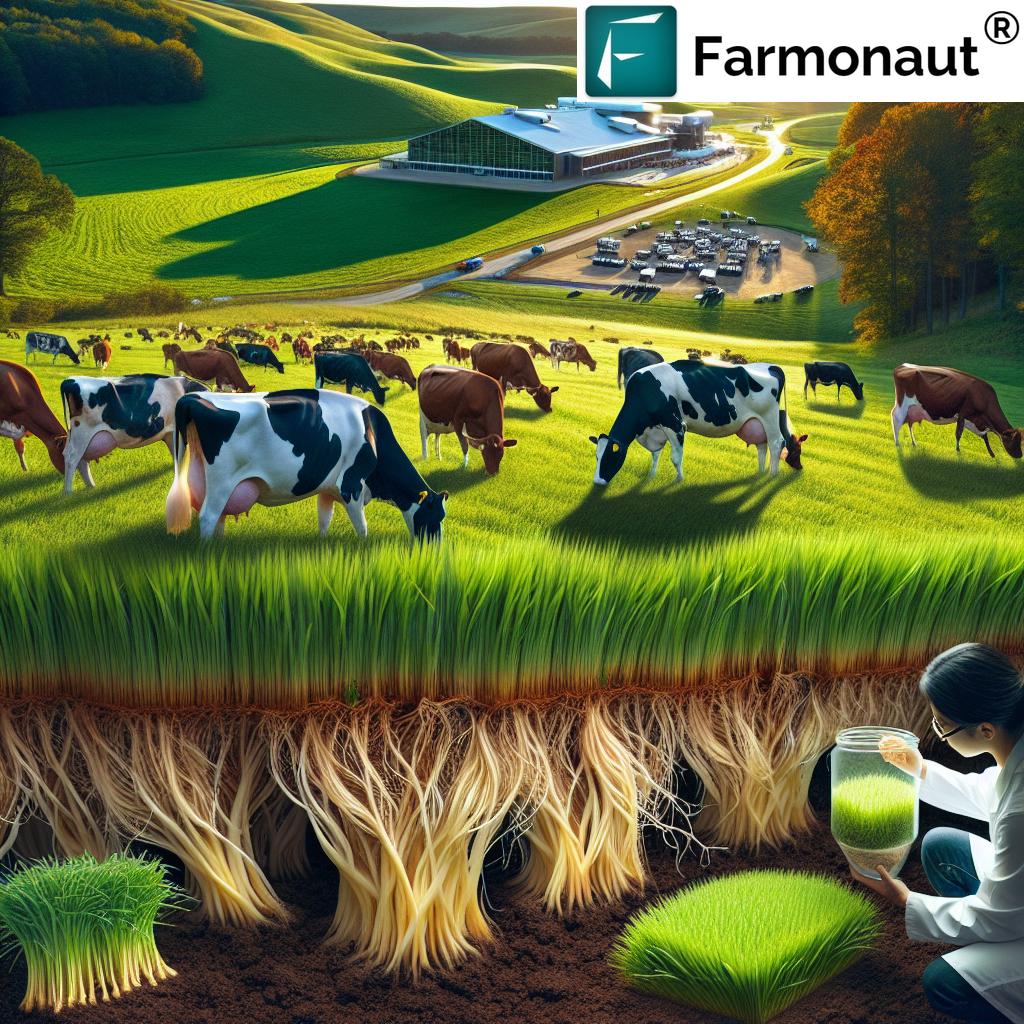Pennycress: Illinois’ Hidden Gem for Sustainable Agriculture and Biofuel Innovation
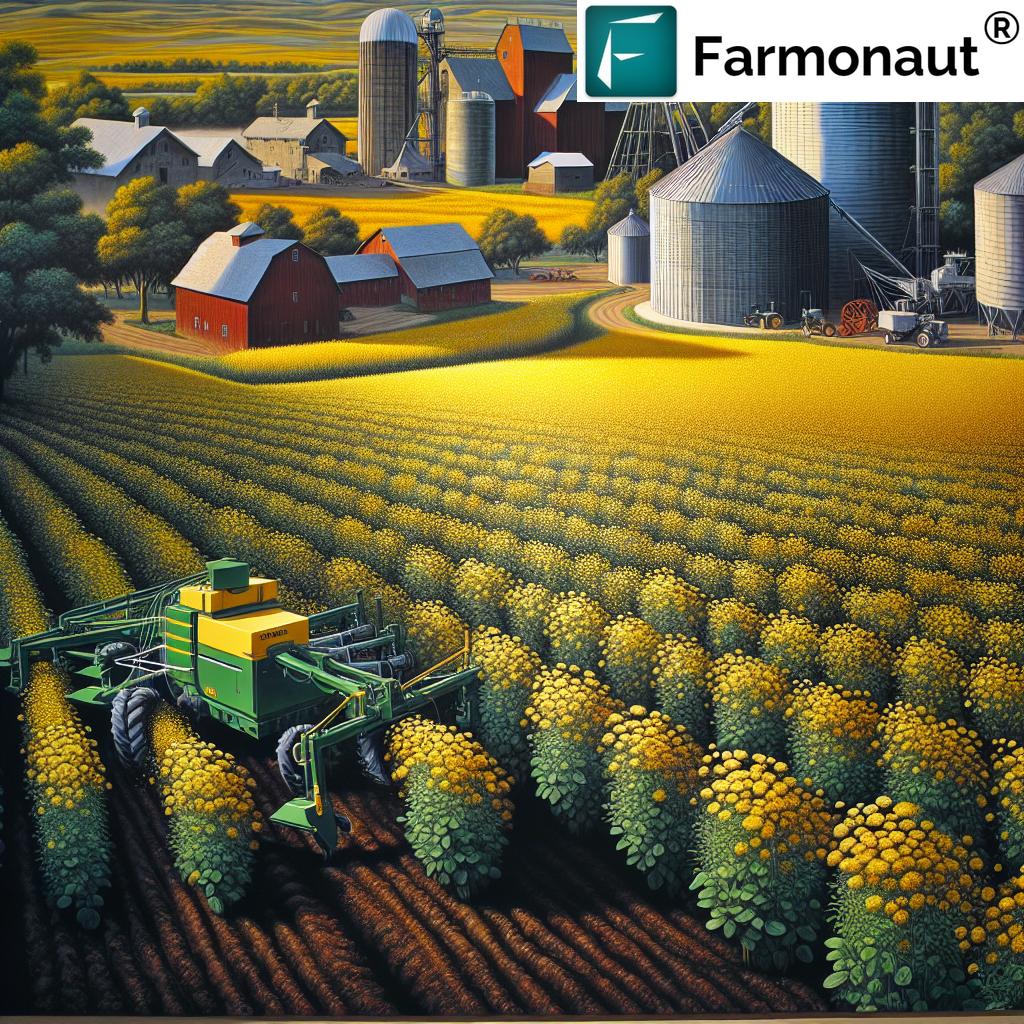
“Pennycress can produce up to 2,000 pounds of seeds per acre, yielding 80 gallons of oil for biofuel production.”
Welcome to our exploration of pennycress, a remarkable plant that’s transforming the landscape of sustainable agriculture practices in Illinois and beyond. Once dismissed as a mere weed, this unassuming crop is now at the forefront of agricultural innovation, offering a plethora of benefits that extend far beyond the farm.
In this comprehensive blog post, we’ll delve into the world of pennycress and uncover how this hidden gem is revolutionizing farming in the Midwest, particularly in Illinois. We’ll explore its role as a winter cover crop, its potential in biofuel production, and its contributions to soil health and environmental conservation.
As we at Farmonaut continue to champion innovative agricultural solutions, we’re excited to share the story of pennycress and its potential to address global concerns such as food security and environmental sustainability. Let’s embark on this journey to discover how this once-overlooked plant is shaping the future of agriculture!
The Rise of Pennycress: From Weed to Wonder Crop
Pennycress (Thlaspi arvense), also known as field pennycress or stinkweed, has a fascinating history in the agricultural world. Native to Eurasia, this annual plant made its way to North America, where it was long considered a nuisance weed in crop fields. However, recent years have seen a dramatic shift in perception, with researchers and farmers alike recognizing its immense potential.
- Adaptability: Pennycress thrives in various soil types and climates, making it an ideal crop for diverse regions.
- Winter Hardiness: As a winter cover crop, pennycress can withstand harsh weather conditions, providing year-round land use.
- Rapid Growth: With a short growing season, pennycress fits well into existing crop rotations, particularly in the corn-soybean systems common in the Midwest.
The transformation of pennycress from a weed to a valuable crop is a testament to the power of agricultural research and innovation. Its potential to address multiple challenges in modern farming has caught the attention of scientists, policymakers, and industry leaders alike.
Pennycress as a Sustainable Winter Cover Crop
One of the most significant advantages of pennycress lies in its ability to serve as an excellent winter cover crop. This role is crucial in addressing several environmental and agricultural challenges:
- Soil Erosion Prevention: Pennycress forms a dense cover over fields during the winter months when traditional crops like corn and soybeans are not growing. This coverage significantly reduces soil erosion caused by wind and water, protecting valuable topsoil.
- Nitrogen Leaching Mitigation: The deep root system of pennycress helps capture excess nitrogen in the soil, preventing it from leaching into groundwater. This not only improves water quality but also reduces the need for additional fertilizers in subsequent growing seasons.
- Improved Soil Health: As a cover crop, pennycress enhances soil structure and increases organic matter content, leading to better water retention and nutrient availability for future crops.
- Weed Suppression: The dense growth of pennycress naturally suppresses weed growth, reducing the need for herbicides and supporting more sustainable farming practices.
“Research shows pennycress can reduce soil nitrogen leaching by up to 60% when used as a winter cover crop.”
By incorporating pennycress into their crop rotations, Illinois farmers can significantly improve the sustainability of their operations while potentially generating additional income from this versatile crop.
Biofuel Production: Pennycress as a Renewable Energy Source
Perhaps one of the most exciting aspects of pennycress is its potential as a feedstock for biofuel production. The seeds of pennycress are rich in oil, making them an excellent source for renewable energy:
- High Oil Content: Pennycress seeds contain up to 36% oil by weight, surpassing many other oilseed crops.
- Biodiesel Production: The oil extracted from pennycress can be easily converted into biodiesel, a cleaner-burning alternative to petroleum-based diesel fuel.
- Jet Fuel Potential: Ongoing research is exploring the use of pennycress oil in the production of renewable jet fuel, opening up new markets for this versatile crop.
The development of pennycress as a biofuel feedstock presents a unique opportunity for Illinois farmers to contribute to the renewable energy sector while diversifying their income streams. This aligns perfectly with national and global efforts to reduce dependency on fossil fuels and combat climate change.
Agricultural Ecosystems: Pennycress and Pollinators
Beyond its roles in soil conservation and biofuel production, pennycress plays a vital part in supporting agricultural ecosystems, particularly when it comes to pollinators:
- Early Flowering: Pennycress blooms early in the spring, providing a crucial food source for pollinators when other flowering plants are scarce.
- Biodiversity Support: By attracting a variety of pollinator species, pennycress helps maintain and enhance biodiversity in agricultural landscapes.
- Extended Foraging Season: The presence of pennycress in crop rotations extends the foraging season for bees and other beneficial insects, supporting their populations year-round.
This pollinator-friendly aspect of pennycress adds another layer to its value in sustainable agriculture, contributing to the overall health and resilience of farming ecosystems.
Innovative Agricultural Research: Advancing Pennycress Cultivation
Researchers across the Midwest, particularly in Illinois, are at the forefront of innovative agricultural research focused on optimizing pennycress cultivation. Key areas of study include:
- Genetic Improvement: Scientists are working on developing pennycress varieties with enhanced traits such as increased seed yield, higher oil content, and improved cold tolerance.
- Agronomic Practices: Research is ongoing to determine the best planting and harvesting techniques for pennycress, ensuring its seamless integration into existing farming systems.
- Ecosystem Services: Studies are quantifying the environmental benefits of pennycress, including its impact on soil health, water quality, and greenhouse gas emissions.
- Value-Added Products: In addition to biofuel, researchers are exploring other potential uses for pennycress, such as in the production of high-protein animal feed or as a source of industrial chemicals.
This robust research agenda is crucial for realizing the full potential of pennycress and ensuring its successful adoption by farmers across the region.

Pennycress in Crop Rotations: Enhancing Soil Health and Productivity
Integrating pennycress into existing crop rotations offers numerous benefits for soil health and overall farm productivity:
- Improved Soil Structure: The deep root system of pennycress helps break up compacted soil layers, improving water infiltration and root penetration for subsequent crops.
- Nutrient Cycling: As a cover crop, pennycress captures and retains nutrients that might otherwise be lost, making them available for the next crop in the rotation.
- Reduced Input Costs: By naturally suppressing weeds and improving soil health, pennycress can help reduce the need for herbicides and fertilizers in following crops.
- Extended Growing Season: Pennycress allows farmers to produce three crops in two years (e.g., corn-pennycress-soybeans), maximizing land use efficiency.
For Illinois farmers, incorporating pennycress into their rotations with traditional crops like corn, soybeans, and wheat can lead to more sustainable and profitable farming operations.
Environmental Benefits: Beyond the Farm
The positive impact of pennycress extends well beyond the boundaries of individual farms, contributing to broader environmental conservation efforts:
- Carbon Sequestration: As a winter cover crop, pennycress helps sequester carbon in the soil, mitigating greenhouse gas emissions and combating climate change.
- Water Quality Improvement: By reducing soil erosion and nitrogen leaching, pennycress plays a crucial role in protecting water resources and aquatic ecosystems.
- Biodiversity Enhancement: The presence of pennycress in agricultural landscapes supports a diverse range of wildlife, from beneficial insects to birds.
- Reduced Nitrous Oxide Emissions: Research indicates that pennycress can help lower nitrous oxide emissions from agricultural soils, a potent greenhouse gas.
These environmental benefits align with global sustainability goals and demonstrate how innovative agricultural practices can contribute to addressing pressing ecological challenges.
Economic Opportunities for Rural Communities
The cultivation of pennycress presents new economic opportunities for rural communities in Illinois and across the Midwest:
- Diversified Income Streams: Farmers can generate additional income by selling pennycress seeds for oil extraction and biofuel production.
- Job Creation: The development of a pennycress industry could lead to new jobs in processing, transportation, and related sectors.
- Rural Development: Increased economic activity around pennycress cultivation and processing can help revitalize rural economies.
- Sustainable Lifestyle: By adopting pennycress, farmers can contribute to more sustainable agricultural practices, enhancing the overall quality of rural life.
These economic benefits can help strengthen rural communities, providing new opportunities and supporting a more resilient agricultural sector.
Challenges and Future Directions
While the potential of pennycress is significant, there are still challenges to overcome for its widespread adoption:
- Crop Establishment: Developing consistent methods for successfully establishing pennycress in diverse field conditions.
- Harvesting Techniques: Refining harvesting methods to maximize seed yield and minimize losses.
- Market Development: Creating robust markets for pennycress oil, meal, and other byproducts.
- Policy Support: Advocating for supportive agricultural policies that incentivize the adoption of pennycress as a cover crop and biofuel feedstock.
Ongoing research and collaboration between scientists, farmers, industry partners, and policymakers will be crucial in addressing these challenges and realizing the full potential of pennycress.
Pennycress Benefits Comparison Table
| Benefit Category | Pennycress | Traditional Cover Crops | No Cover Crop |
|---|---|---|---|
| Soil Erosion Prevention (estimated % reduction) | 80% | 60% | 0% |
| Nitrogen Leaching Mitigation (estimated % reduction) | 60% | 40% | 0% |
| Biofuel Potential (estimated gallons/acre) | 80 | 20 | 0 |
| Pollinator Support (estimated species supported) | 30 | 20 | 5 |
| Crop Rotation Benefits (estimated yield increase %) | 10% | 5% | 0% |
The Role of Technology in Pennycress Cultivation
As we explore the potential of pennycress, it’s crucial to recognize the role of advanced agricultural technologies in optimizing its cultivation and management. At Farmonaut, we’re committed to providing cutting-edge solutions that can enhance the efficiency and sustainability of pennycress farming:
- Satellite-Based Crop Health Monitoring: Our advanced satellite imagery technology can help farmers monitor the health of their pennycress crops in real-time, enabling early detection of issues and timely interventions.
- AI-Driven Advisory Systems: Our Jeevn AI system can provide personalized recommendations for pennycress cultivation, taking into account local weather patterns, soil conditions, and crop health data.
- Precision Agriculture Tools: Farmonaut’s platform offers tools for precise resource management, helping farmers optimize irrigation, fertilizer use, and other inputs for pennycress cultivation.
By leveraging these technologies, farmers can maximize the benefits of incorporating pennycress into their agricultural systems while minimizing potential challenges.
For more information on how Farmonaut can support your farming operations, including pennycress cultivation, visit our web app or download our mobile apps:
Conclusion: Pennycress – A Catalyst for Sustainable Agriculture
As we’ve explored throughout this blog post, pennycress stands as a remarkable example of how innovative thinking and research can transform a once-overlooked plant into a powerful tool for sustainable agriculture. From its role as a winter cover crop to its potential in biofuel production, pennycress offers a multitude of benefits that address pressing agricultural and environmental challenges.
For Illinois farmers and those across the Midwest, pennycress represents an opportunity to enhance soil health, diversify income streams, and contribute to broader sustainability goals. As research continues and adoption grows, pennycress has the potential to play a significant role in shaping the future of agriculture, helping to create more resilient, productive, and environmentally friendly farming systems.
At Farmonaut, we’re excited to be part of this agricultural evolution, providing the technological tools and insights needed to maximize the benefits of crops like pennycress. Together, we can work towards a more sustainable and prosperous future for agriculture and our planet.
FAQ: Pennycress in Sustainable Agriculture
Q1: What makes pennycress different from other cover crops?
A1: Pennycress stands out due to its winter hardiness, high oil content for biofuel production, and ability to fit seamlessly into existing crop rotations without displacing food crops.
Q2: How does pennycress contribute to soil health?
A2: Pennycress improves soil structure, prevents erosion, reduces nitrogen leaching, and increases organic matter content, all of which enhance overall soil health.
Q3: Can pennycress be used for anything besides biofuel?
A3: Yes, pennycress has potential uses in animal feed, as a cover crop, and in the production of various industrial chemicals.
Q4: How does pennycress benefit pollinators?
A4: Pennycress flowers early in the spring, providing a crucial food source for pollinators when other flowering plants are scarce.
Q5: Is pennycress cultivation economically viable for farmers?
A5: While market development is ongoing, pennycress offers potential for additional income through seed sales for biofuel production and improved soil health, which can reduce input costs for subsequent crops.
For more information on how Farmonaut’s satellite technology and AI-driven insights can support sustainable agriculture practices, including the cultivation of innovative crops like pennycress, visit our web app or explore our API for developers. Our API Developer Docs provide comprehensive information on integrating our satellite and weather data into your agricultural management systems.
Together, we can harness the power of technology and innovative crops like pennycress to create a more sustainable and productive agricultural future.





